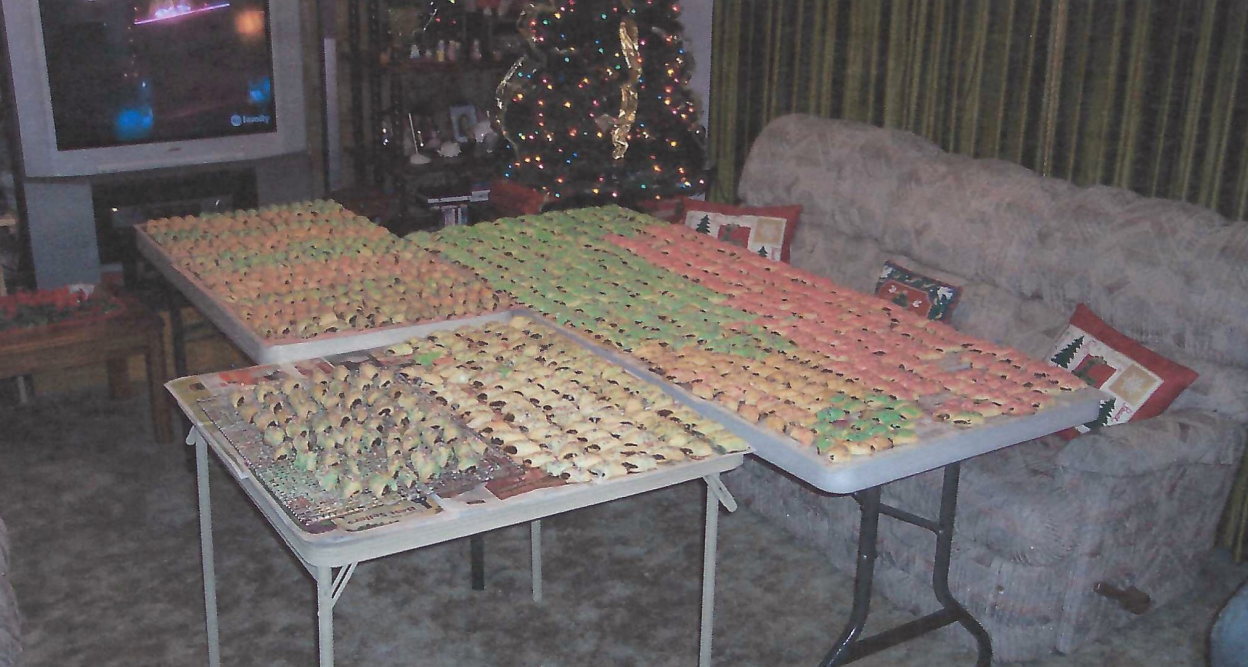
Photo by Valentin Valkov
The time has come: the season for baking holiday cookies! If you're looking for a uniquely Sicilian cookie recipe, consider the cuccidati. Also spelled cucidati and sometimes called buccellati, these gooey, chewy cookies are a favorite this time of year and tend to appear on St. Joseph Day altars. Reflecting the Arab influence on Sicily's foods and culture, they are typically filled with dried figs, nuts, and citrus. Their pastry-dough exterior is often covered in icing and topped with rainbow sprinkles for a colorful pop to Italian cookie platters.
To learn more about making cuccidati, I reached out to Dave Costanza, who won first place in November's twelfth annual Cucidati Contest. The event, organized by the Sons & Daughters of Italy, C. Colombo Lodge 1315, in Pittsburg, California, raises funds for scholarships. Using a blind taste test, judges rate cookies on appearance, texture, filling, and dough.
While Dave has entered a handful of times, this was his first top-prize win. The Antioch, California, resident was born in Pittsburg, where his Sicilian grandparents emigrated from Isola delle Femmine in the Palermo Province.
Dave took time from his busy holiday cookie and ravioli preparation to discuss his award-winning recipe and technique with me. We were joined by Zelda LeFrak-Belleci, who not only serves as the chairman of the Cucidati Contest judging committee but also teaches how to bake the classic cookies.
How did you start making cuccidati?
Dave: I have a cousin who was a cook in the army. One day, I met him at a funeral, and we got to talking. He took me to his house and showed me how to make cuccidati. From there, I put my personal touch on the recipe.
Zelda: You have to learn from somebody; like when I married into the family, my mother-in-law taught me in her kitchen how to do cuccidati. And she brought me over to show me how to make ravioli. That's how it's done.
I decided I would have a cuccidati cooking class. So, for the past three contests, I've offered a cooking class in my kitchen a month ahead of time.
What are the key ingredients?
Dave: Raisins, some kind of nuts, lots of figs. The local store here has bulk dates; when you buy them in the package, they add something, so I only used dried bulk ingredients. I add whiskey and rum and let the filling sit in the refrigerator for months at a time.
What is the secret to a winning cookie?
Dave: Grind the filling up just right. I use a food-grade caulking gun. I load up the caulking gun with the filling and draw a perfect bead down the center.
What memories do you have of cuccidati?
Dave: I remember them lying around at Christmas time. But I wasn't a big fan until I started making them because my grandmother never made them really well. I was never a big sweets person, but I came around.
Dave Costanza's award-winning cuccidati.
What do you hope to share with the next generation?
Dave: My daughter-in-law helped us make them for the contest. It is a family tradition to make the ravioli and the cuccidati together. We start horsing around once we get through making the cuccidati and the ravioli.
Zelda: It is an opportunity to share Italian culture and come together over food. It's a family event that happens to raise money to help young people expand their horizons and give them an opportunity to go to college.
If you enjoyed this article, consider subscribing to my newsletter for more content and updates!

